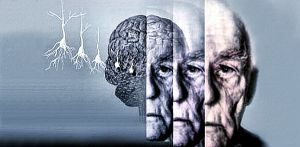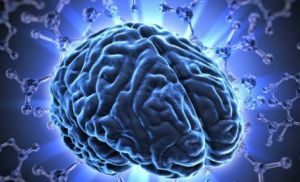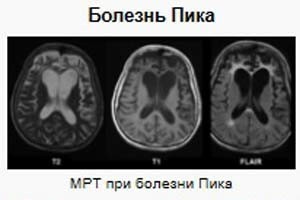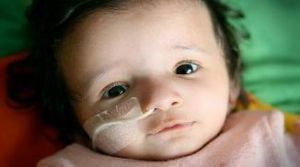 Pick's disease is a fairly rare serious disease of the brain, which eventually leads to loss of viability of the cells of the temporal and frontal lobes.
Pick's disease is a fairly rare serious disease of the brain, which eventually leads to loss of viability of the cells of the temporal and frontal lobes.
With this disease, rapidly developing dementia occurs. The clinical picture is similar in many respects to Alzheimer's disease, but differs in manifestations, intensity of flow and the therapeutic methods used.
In Pick's disease, the cerebral cortex is thinning due to the death of neurons. First, there are behavioral changes, verbal deviations, and at the last stages, dementia occurs.
Contents of
- Dementia is. ..
- Rapid progress of the disease
- Initial stage of development of
- Second stage of
- Causes of development of
- violation Manifestations and characteristics of
- Timely diagnosis is the first step to success
- Differentiation from Alzheimer's disease
- How to help the patient and what his chances are
- Worth knowing!!
Dementia is. ..
Dementia is a progressive and irreversible process in the brain regions, leading to a loss of intelligence and a decrease in the rest of the person's mental functions. However, the consciousness at the onset of the disease for quite a long time remains clear, the symptoms develop about six months, although there are cases of reactive development of the disease.
Dementia may be caused by factors such as: 
- uncontrolled use of medicines;
- deficiency of vitamin B;
- infection;
- alcohol abuse;
- tumors;
- head injury.
The average life expectancy of a patient with this ailment is on average no more than ten years.
The rapid progress of the disease
The disease of the Pike develops rapidly. There are such stages of the development of the disease.
Initial stage of development of
At the first stage, the character changes. A person becomes egoistically oriented, commits atypical actions for him:
- emotional emancipation - moral principles are depreciating, sexual promiscuity arises;
- speech changes - the patient often repeats the same jokes, words;
- loss of self-control;
- disorders of the psychoemotional sphere - hallucinations, increased feelings of jealousy, disability.
The second stage of
Symptoms progressed imperceptibly, they can occur periodically, and then become permanent: 
- the onset of amnesia;
- speech disorders, the patient becomes unable to express themselves clearly with words, there is no understanding of the meaning of other people's speech.
- violation of the ability to perform even the most simple actions;
- deformation of visual, auditory, tactile perception;
- loss of ability to perform oral and written actions, the account.
At the last stage, dementia acquires a deep irreversible form. The patient becomes incapable of self-care and requires full-fledged care.
Causes of development of a disorder
The exact causes that can cause Pick's disease are not established. However, probable provoking factors may be:
- Heredity .Very often, pathology can be diagnosed in the immediate family of the patient.
- Head injury , which led to the death of neurons.
- Intoxication - in this case, neuronal death occurs due to prolonged systematic exposure to alcohol, chemicals that have a toxic effect on the body. The same applies to anesthesia, which has been used many times.
- Previously transferred mental disorders .
Manifestations and characteristics of
 Surveys of patients diagnosed with Pick's disease make it possible to distinguish symptoms that fall into two groups - the occurrence of difficulties with oral and written speech and behavioral disorders.
Surveys of patients diagnosed with Pick's disease make it possible to distinguish symptoms that fall into two groups - the occurrence of difficulties with oral and written speech and behavioral disorders.
Surrounding people and relatives of the patient note that he has negative personality changes.
Among the characteristic manifestations can be identified:
- Atrophy in the frontal regions of the brain affects the increased mood, a person becomes completely irresponsible in the matter of doing household and observance of their duties. There is absent-mindedness and inattention. It is also common in patients marked by sexual emancipation.
- At atrophy of the temporal lobes of the , patients have opposite qualities: they become unnecessarily hypochondriac, they think that they are not necessary to others, they feel a sense of loneliness and abandonment.
- With any localization of the lesion speech is broken, the speech sense is simplified, the same expressions appear, the ability to correctly build sentences and communicate their thoughts, as well as understand and analyze the speech of other people, is disrupted. The sick people stop caring for themselves, they become slovenly. There are constant attacks of emotional outburst.
- In the middle of the development of the disease the weight of the patient changes sharply, obesity arises, and then the opposite state occurs - the organism is exhausted with general weakness and deterioration of the functions of physiological processes.
It can be unequivocally said that Peak's disease fundamentally changes a person's personality.
Timely diagnosis is the first step to the success of
 It is possible to diagnose the disease after a clinical examination and personal conversation with the patient.
It is possible to diagnose the disease after a clinical examination and personal conversation with the patient.
Also the doctor should conduct a conversation with the next of kin to identify phases of personality change.
Surveys are conducted using the following methods:
- electroencephalography - detecting the activity of electrical impulses in the brain, in this case, deviation from the norm will be seen;
- computed tomography - a step-by-step examination of the brain departments.
Differentiation from Alzheimer's Disease
Peak and Alzheimer's disease have one common symptom - dementia. Differentiate one disease from another by the following criteria:
- Age differences .Pick's disease develops at the age of fifty years, while Alzheimer's disease is almost not diagnosed before sixty years.
- Propensity to aggression against relatives .Patients with a violation of the peak, beginning with the early stages of the disease, are prone to vagrancy, resisting guardianship from their relatives. In patients with Alzheimer's disease, these manifestations occur much later.
- The whole thing is in the memory of .In the first phases of Pick's disease there are no violations of attention, a person can orientate on the terrain,
 perform a mathematical account. In the case of Alzheimer's disease, the main symptom is a sharp decline in memory.
perform a mathematical account. In the case of Alzheimer's disease, the main symptom is a sharp decline in memory. - The question of permissiveness .In Alzheimer's disease, there are no personal changes at the first stages, while in Pick's disease pathological emancipation is revealed, when the patient is thoughtlessly obeying his physiological instincts.
- Speech violations of the .The primary symptom of Pick's disease is a noticeable impoverishment of the vocabulary. In Alzheimer's case, at the initial stages, speech impairment is not noted, and the process takes place more slowly.
- Reading and writing .Patients with Alzheimer's disease almost immediately lose the skills of reading and writing, in people with Pick's disease these skills are not lost for a long time.
How to help the patient and what are his chances
 To date, there is no general method for treating Pick's disease. All that a doctor can do is prescribe medication for delaying progressive changes and improving a person's condition.
To date, there is no general method for treating Pick's disease. All that a doctor can do is prescribe medication for delaying progressive changes and improving a person's condition.
However, modern medicine has opened five areas of treatment, which allow to achieve the greatest effect in slowing the progression of the process of dementia. These include:
- Substitution therapy - inhibitors of acetylcholinesterase, monoamine oxidase inhibitors, antidepressants. The effect of these drugs is aimed at replenishing the deficiency in the human brain of certain substances that cease to be produced in the right amount due to atrophy.
- Neuroprotective agents - neurotrophic substances, calcium channel blockers, antioxidants, growth factors. These drugs help stimulate brain cells. As a result, the metabolic processes are significantly improved, and this helps to slow the death of neurons and atrophy of the cerebral cortex.

- anti-inflammatory drugs are also used.
- Pharmacological correction of of existing mental disorders in humans. In this case, antidepressants are prescribed, drugs that suppress aggression.
- Psychological professional assistance .Such therapy includes various trainings. This technique is very effective in slowing the progression of the disease.
An important role in therapy is played by psychological help from relatives. It is very dangerous to leave the patients alone, because the person in the late stages of the disease is not at all able to give an account of his actions.
When diagnosing this disease, the prognosis for life is unfavorable. A person becomes helpless, unable to self-service, so he needs 24-hour supervision, he loses social and communication skills, becoming antisocial.
Already for five years the disease leads to moral decay in person and the state of complete decay of psychophysical activity is coming.
Worth knowing!
 Quite often Pick's disease is confused with Niemann Pick's disease. The main difference between these two ailments is the age index. If the first is detected after fifty years, the second is diagnosed in childhood, and this ailment does not apply to mental disorders.
Quite often Pick's disease is confused with Niemann Pick's disease. The main difference between these two ailments is the age index. If the first is detected after fifty years, the second is diagnosed in childhood, and this ailment does not apply to mental disorders.
Niemann Pick's disease is hereditary in nature. It arises because of a violation of lipid metabolism, as a result of which these natural compounds accumulate in the brain, liver, spleen and lungs.
Depending on the form of the disease, the first manifestations of pathology can be found in the child in several months or in adolescence. Pathologies in the child at birth are not diagnosed.
The mechanism of inheritance occurs by mutating certain genes. The disease is caused by the deficiency of sphingomyelanin, responsible for the cleavage of lipids. As a result, the process is disrupted, and the lipids accumulate in the cells, increasing them.
Diagnosis of the disease reveals a pathological increase in the spleen, adrenal gland, liver. The color of the organs changes, becomes yellowish, spots appear on the lungs.



